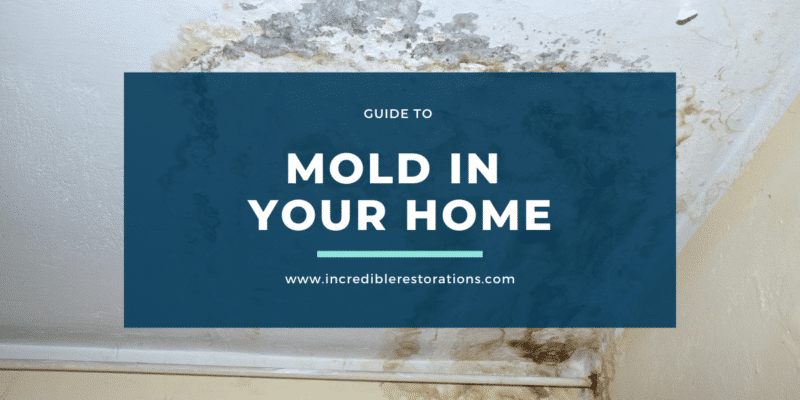What if I told you that the spill you forgot to clean yesterday would get moldy tomorrow?
Did you know, mold inside a home can begin growing in as little as two to three days?
Yeah we know, it’s insane.
Mold in your home is a scary topic considering how it can grow almost everywhere.
Doing a simple google search on the topic could have anyone concerned about their health.
Finding mold in our homes is concerning enough, but without proper knowledge, assessment, and testing it’s difficult to determine how severe the situation is.
Most molds are health irritants and can be found inside or outside at any time of the year.
Mold is most problematic when it eats away at materials, which can affect the look, smell, and sometimes the structure of buildings.
Different types of mold are dependant on the area you live in, however, in North America, Aspergillus, Penicillium, Cladosporium are the most common.
Stachybotrys Chartarum also known as Black Mold is the most commonly known and most feared.
Common
Types of Mold
in Your Home
Aspergillus Mold
Aspergillus is a common type of mold found in homes.
This type of mold can be found almost everywhere including kitchens and bathrooms, mattresses and carpets, basements, in flower pot soil, and various carpet pad materials in your home.
This type of mold may cause allergies, however, some species can even lead to ear, nose, and lung infections.
Dealing with this mold as soon as possible is crucial if you experience symptoms.
Penicillium Mold
Penicillium is frequently seen indoors and is a sign of dampness in your home.
It mainly causes food spoilage but can also be the source of allergies for those sensitive to mold. You can find it in walls, wallpaper, flooring, carpets, mattresses, and upholstery furniture dust. Penicillium can be inhaled during normal breathing.
Cladosporium Mold

Cladosporium mold can be found on textiles, rubber, paper, and all types of food in your home.
Check your flooring, carpet, mattress dust, damp walls, wallpaper, your AC unit, filters, and fans, as they are all possible places for growth.
This mold is more common in the summer and could trigger symptoms like asthma attacks depending on how severe it is.
Stachybotrys Chartarum aka Black Mold

Black mold is known as the most dangerous type of mold.
It requires a high level of water activity, and grows best when in constant contact with moisture. Black mold is a sign of existing or previous water damage in your home.
Generally, it takes 8 weeks for black mold to grow but under the right conditions…
It can begin to show signs of growth within 7 to 12 days. Some symptoms from black mold are skin inflammation, respiratory problems, irritation of mucous membranes and damage to internal organs and mental impairment.
The best defence against mold is proper treatment of water damage by professional restoration services and is best dealt with as quickly as possible. If you want to learn more about professional water damage restoration process, click here.



